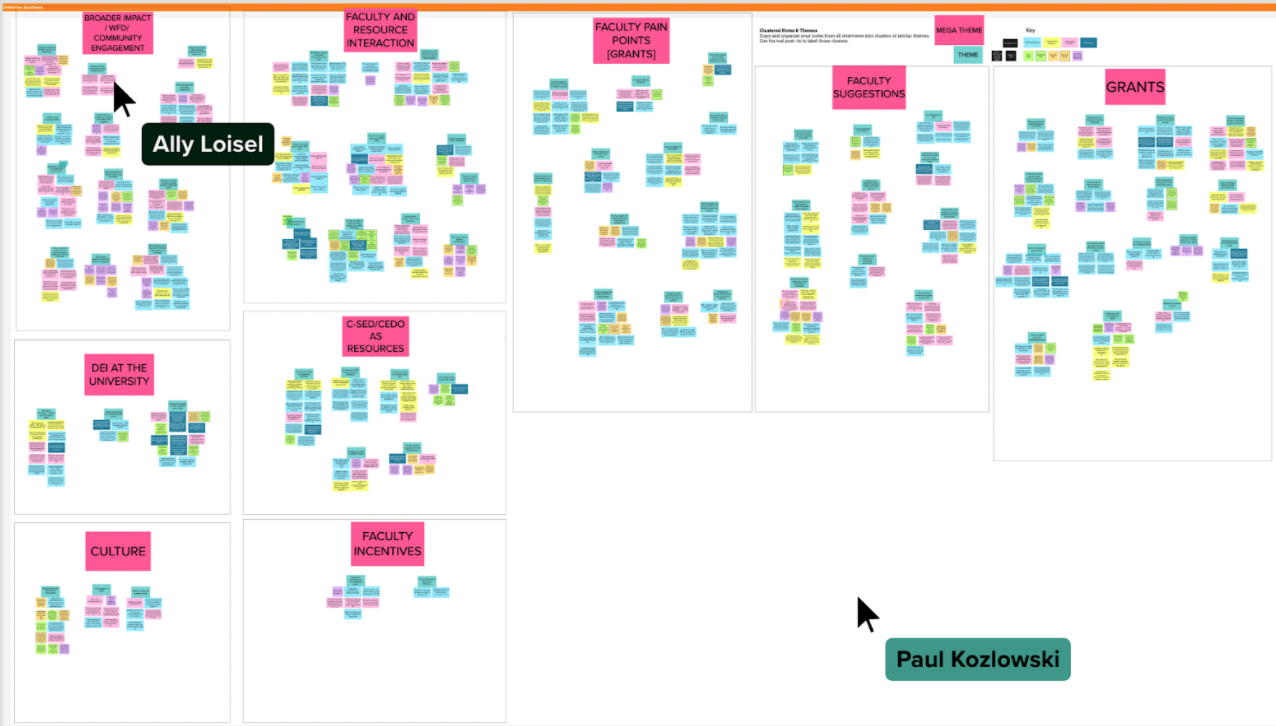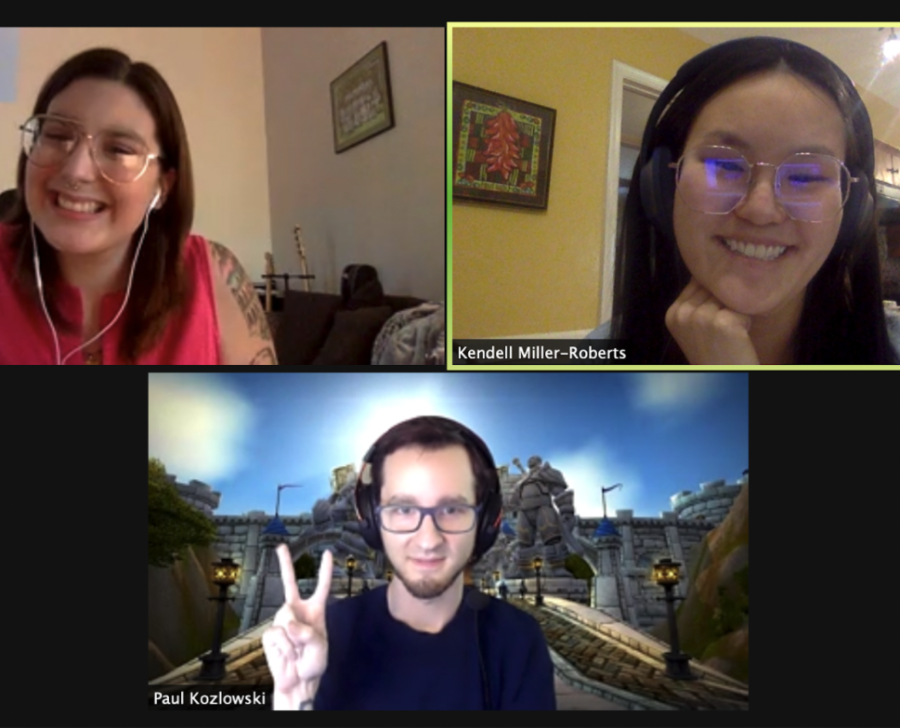Looking Back at My Summer Studio Experience
As she prepares for graduation and the job search, Ally Sierra, C-SED’s Design Consultant and superuser, speaks on her experience as a Summer Studio intern last summer.
Story by Ally Sierra
Navigating an Internship Search
Being a first-generation college student means a lot of things, including not knowing how long it takes to find an internship. I applied for internships for 6 months before finally getting some interviews and, eventually, getting a couple of offers, too. Throughout the process, I had to make some decisions. What kind of internship would best prepare me for a “future career?” Which inevitably leads to the question: what do I want to do with my life?
I was particularly torn between working in a more UX design-centered position or a more design research-centered position. Coming from the School of Information, I took a couple of classes involving both kinds of work. I just wasn’t sure exactly which I wanted to do more! In the end, I felt like I had more practice with implementing design, so it was time for me to practice my research skills. I was stoked to hear about the opportunity to do Summer Studio, which works to deliver design recommendations to researchers. I was part of a team of three with backgrounds in information science and integrative design.
Intro to Summer Studio
My team spent the better part of three months doing design research in collaboration with the Center for Socially Engaged Design (C-SED) and the Center for Engineering Diversity and Outreach (CEDO). We were tasked with gathering insights, understanding stakeholder needs, and designing prototypes that would allow C-SED and CEDO to effectively collaborate with faculty and teams.
We used the socially engaged design process model to gather as much information as possible about the grant proposal process for College of Engineering (CoE) faculty including: what are the current needs and assets of our stakeholders? What are the unique experiences of faculty across the college? What is the most effective way to navigate the ever changing landscape of research funding? As we started to gain our bearings, I felt pretty lost in a sea of words. I kept hearing terms like “grant proposals,” “Broader Impacts,” and more, and, though I had a basic understanding of what they meant, I couldn’t picture them clearly in my mind or see why any of this really mattered. All I knew for sure was that the experience would result in a proposed roadmap for administrators and faculty to follow to ensure their work fulfills the mission of the College – to serve the common good.

Design Challenge
One of the great things about the socially engaged design process is that it is expected to be winding and iterative; so, I was able to explore the context of the problem for quite a while. Even when we had approached the define and ideate stages, we were always still exploring the challenge space. To me, working on design challenges feels a bit like how I learned long division. I spent a lot of time thinking about it and staring at the page but, one day, it just clicked. After talking to a lot of people and asking a lot of questions, I started to have a better understanding of the challenge space. Here’s what you need to know to understand our project:
- To be a professor, you have to go to school for a long time and conduct a lot of research
- Once you are a professor, you spend years on your own research
- Your own research is funded by grants, and applying for grants can be (and usually is) a lengthy, not-so-fun process
- Research institutions, like our very own U-M, really want professors to apply for as many grants as possible
At first glance, the list of bullet points looks pretty straightforward. Part of a professor’s job is to conduct research, but they have to apply for the money to be able to carry out the research. One of the largest sources of funding for engineering professors is the National Science Foundation (NSF). Recently, (within the last decade or so), the NSF is requiring professors to complete a Broader Impacts section in their grant proposals. The Broader Impacts section is supposed to outline how one’s research will impact society and will benefit the public good. This means:
- Professors spend a ton of time on their research, teaching, and applying for grants
- Now, they have to spend time on figuring out ways in which their research fulfills Broader Impacts (example: hosting high school students from underserved communities to visit the labs at the University of Michigan for a week-long summer camp)
- After figuring out what fulfills this section, they have to spend time implementing their idea and articulating the writing for their proposal
This is a simplified overview of the challenge space we were working in this summer. We spent twelve weeks doing things like background research, conducting interviews, synthesizing and analyzing data, ideating, and prototyping.
Level Up: Professional Edition
This was very exciting for me, as most of my previous experiences have been in the customer service field. This felt like one of my first professional positions, and, even better, it was very relevant to my intended career path and helped me refine my career goals moving forward. Other than further developing my hard skills like my proficiency in Mural, AirTable, and Adobe XD, I gained a stronger understanding of the professional space and all of the aspects that come with it.

Every challenge space has undercurrents of existing privilege, power, identity, and motivations. These undercurrents obviously exist in the customer service realm, but they don’t always come to fruition as profoundly as in UX spaces. For example, a lot of our research touched on the lack of representation for women in STEM fields (specifically engineering). When female-identifying faculty and staff spoke about their experiences as such, I was forced to reflect on my own identity as a woman in STEM and the implications that has.
Reflecting on Identity
I was also able to reflect a lot on my own implicit biases. As part of navigating the socially engaged design process, we went through some workshops that allowed us to reflect on the perspectives we might bring to the challenge space and, conversely, perspectives that others bring to the challenge space. For example, I thought about preconceived notions that I had about professors in general. Specifically, as someone from a low-income family, I assumed that faculty members are really well-off. I acknowledged this assumption as we started the project, which allowed me to be more cognizant of how I might interpret things.
One of C-SED’s design mindsets is “engage with empathy,” and I definitely practiced it often. In an interview with a stakeholder, a full professor was telling us about her devotion to her work. She talked about her passion for her research and then spoke about how one of her “pain points” is having a lack of time for all of her responsibilities. She talked about how some of her colleagues were “brave enough” to have a family, given the amount of time required to do so. This really spoke to me, because I can’t imagine having to choose between my work/passion and having a family. Personal stories came out of a ton of our interviews, and I reflect quite often on them.
Future Career Insights
In some ways, design research reminds me of studying abroad (or traveling in general). When I travel to a new place, I feel like I have a new piece of the puzzle that is the world. Design research feels similar. This summer, I was able to “be an expert” and learn a TON about a concentrated area; in this case, the concentrated area was faculty pain points throughout the grant proposal process. Meanwhile, the knowledge gained through design research is helpful to the group of people you’ve spent so much time getting to know. To be able to learn so much about an area and then take that information and create something helpful is really special.
I’m really thankful that I had the opportunity of doing Summer Studio this year because I learned about myself and what I want to do in the future more than I thought I would. I’ve always loved helping others and I’ve always loved the concept of design, but I didn’t realize there was such a thing as socially engaged design. It makes so much sense! It makes so much sense to look at design through an equity-centered lens. It makes so much sense to ask questions like, “Why is this a problem in the first place?” I am coming away from this having a much more concrete understanding of what spaces I want to work in in the future, and I couldn’t be more excited.
After this summer, I feel more confident not only in my ability to look for a position that I’m qualified for, but also in my ability to be selective in choosing a workplace whose values match my own. Before Summer Studio, all I knew was that I wanted to work in UX design and research. Now, I am able to refine my career goals more clearly. I’d love to work somewhere where I can take an equity-centered approach to UX. I want to be able to make a step in the right direction towards dismantling systems of oppression; I want to help make minoritized communities heard through innovative design practices. After Summer Studio, I feel like I am on the right path to being the kind of designer I’ve always wanted to be.



